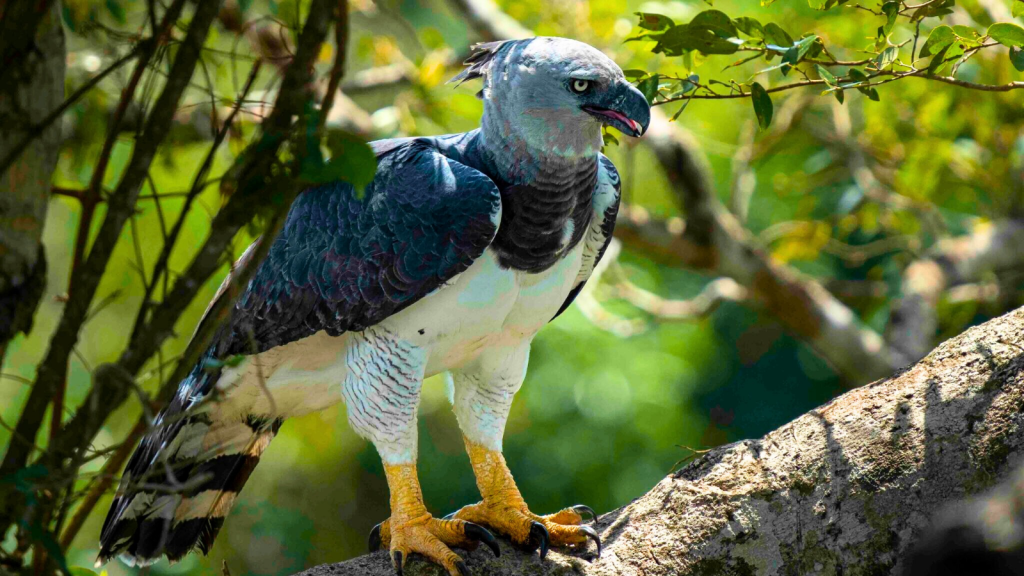The Harpy Eagle is a magnificent bird of prey that dominates the rainforests of Central and South America. With its impressive size and fierce appearance, this eagle has captured the imagination of people for centuries. Named after the harpies of Greek mythology, these birds are as formidable as their namesakes suggest. Their power, hunting prowess, and unique adaptations make them true masters of their domain. From their massive talons to their distinctive facial disc, every aspect of the Harpy Eagle is designed for life as a top predator in the dense jungle canopy. Let’s explore some of the most fascinating facts about this incredible raptor.
Enormous Size

The Harpy Eagle is one of the largest and most powerful eagles in the world. Females can weigh up to 9 kg and have a wingspan of up to 2 metres. This makes them about twice the size of the more familiar Bald Eagle, giving them an imposing presence in the forest canopy.
Powerful Talons
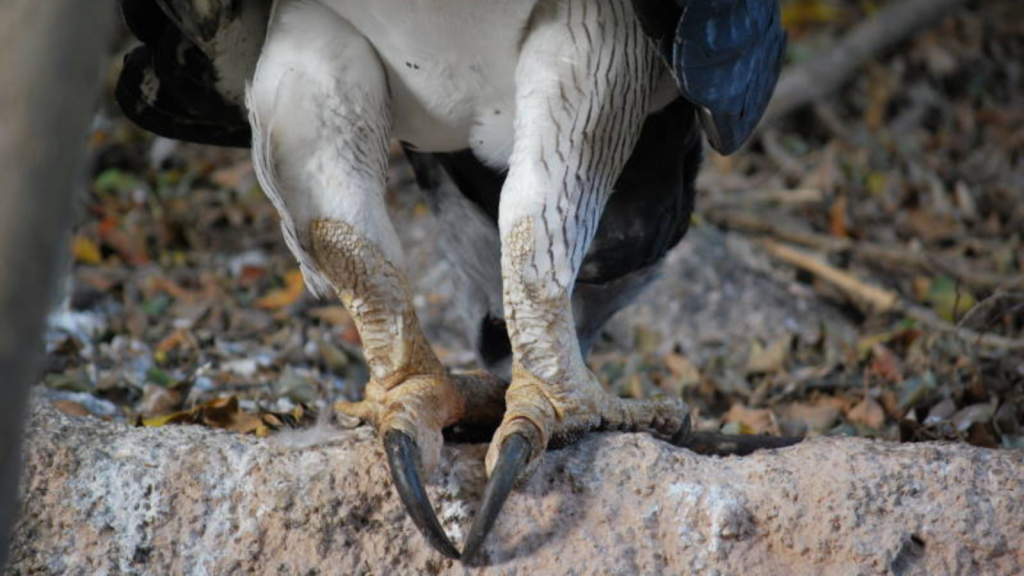
Harpy Eagles possess some of the largest talons of any bird, measuring up to 13 cm long. These massive claws are about the same size as a grizzly bear’s and can exert a crushing force of 530 pounds per square inch. With such formidable weapons, Harpy Eagles can easily catch and kill large prey, including monkeys and sloths.
Distinctive Facial Disc

One of the Harpy Eagle’s most striking features is its facial disc, a circle of feathers around its face that can be raised or lowered at will. This disc helps to funnel sound to the eagle’s ears, enhancing its already keen hearing. When raised, the disc gives the Harpy Eagle an almost owl-like appearance, adding to its fierce visage.
Silent Flight
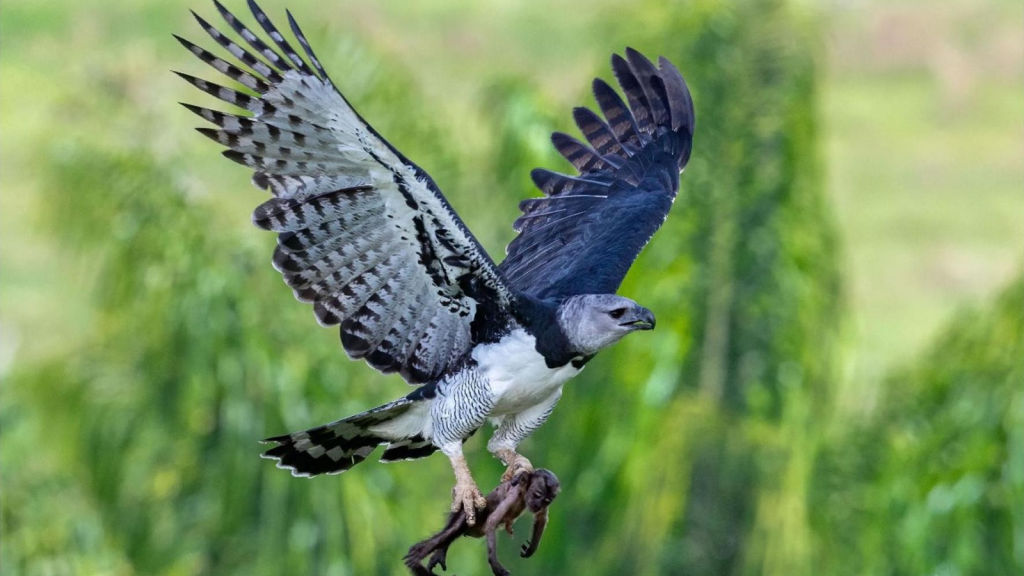
Despite their large size, Harpy Eagles are remarkably silent flyers. Special adaptations in their wing feathers help to muffle the sound of air passing over them. This allows the eagles to approach their prey undetected, a crucial advantage when hunting in the dense rainforest.
Exceptional Vision

Harpy Eagles have extremely sharp eyesight, estimated to be eight times more powerful than human vision. They can spot potential prey from over 200 metres away, even through the thick forest canopy. This keen vision is crucial for locating well-camouflaged animals in the complex rainforest environment.
Nesting Habits

Harpy Eagles build some of the largest nests of any bird species. Their nests can measure up to 1.5 metres across and 1.2 metres deep, large enough for an adult human to lie in comfortably. These massive structures are typically built in the tallest trees of the forest and are used repeatedly over many years.
Long Lifespan

In the wild, Harpy Eagles can live for 25 to 35 years. In captivity, they have been known to live even longer, with some individuals reaching up to 50 years of age. This long lifespan allows them to produce multiple offspring over their lifetime, helping to maintain their population.
Low Reproductive Rate

Despite their long lives, Harpy Eagles have a very low reproductive rate. They typically lay only two eggs every two to three years, and usually only one chick survives. The young eagle remains dependent on its parents for up to 10 months after hatching, one of the longest dependency periods of any bird species.
Apex Predator Status

As apex predators, Harpy Eagles have no natural predators of their own. They sit at the top of their food chain, playing a crucial role in controlling populations of their prey species. This position makes them an important indicator of the overall health of their rainforest ecosystem.
Varied Diet

While Harpy Eagles are known for hunting monkeys and sloths, their diet is actually quite varied. They also prey on iguanas, snakes, large rodents, and other birds. This adaptability in their diet helps them survive in different habitats and conditions.
Reversed Sexual Dimorphism

In an unusual twist for birds of prey, female Harpy Eagles are significantly larger than males. Females can be up to twice as heavy as males. This size difference allows the pair to hunt different prey, reducing competition between mates and ensuring a wider range of food sources for their young.
Limited Flight Endurance

Despite their power, Harpy Eagles are not built for long-distance flight. Their short, broad wings are perfect for manoeuvring through the forest canopy but are less suited for soaring. As a result, these eagles rarely fly for more than a few minutes at a time, preferring to move between perches in short bursts.
Incredible Grip Strength

The Harpy Eagle’s talons aren’t just large; they’re incredibly strong. Their grip has been measured at 530 psi (pounds per square inch), which is stronger than a Rottweiler’s bite and about ten times stronger than the average human hand. This powerful grip allows them to snatch up large prey and carry it off with ease.
Unique Hunting Strategy
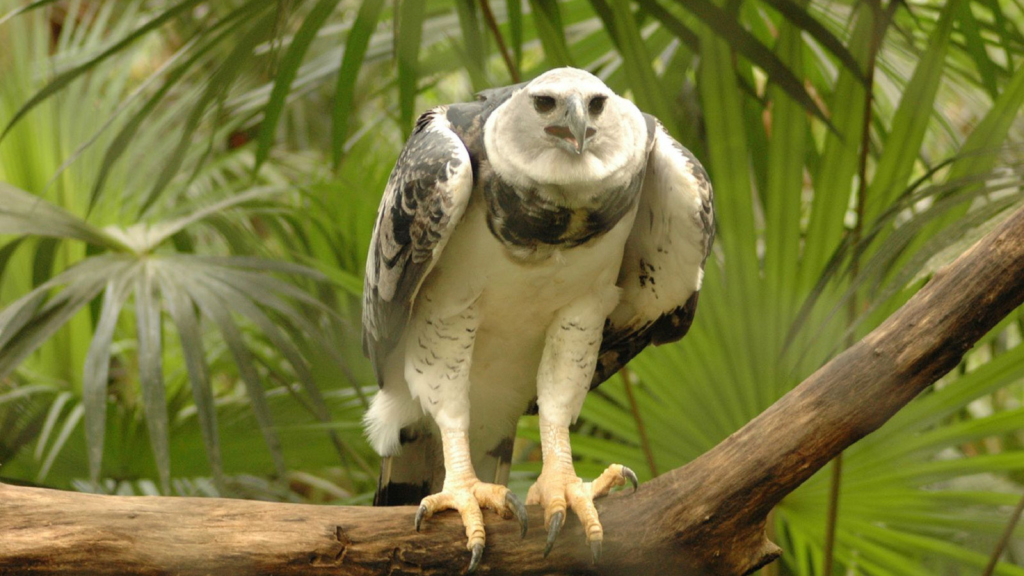
Unlike many other eagles that soar high and dive onto prey, Harpy Eagles employ a unique “sit-and-wait” hunting strategy. They perch motionless for hours, using their exceptional vision to scan for prey. When a target is spotted, they burst into action with a swift, powerful flight through the forest canopy to capture their quarry.
Remarkable Memory
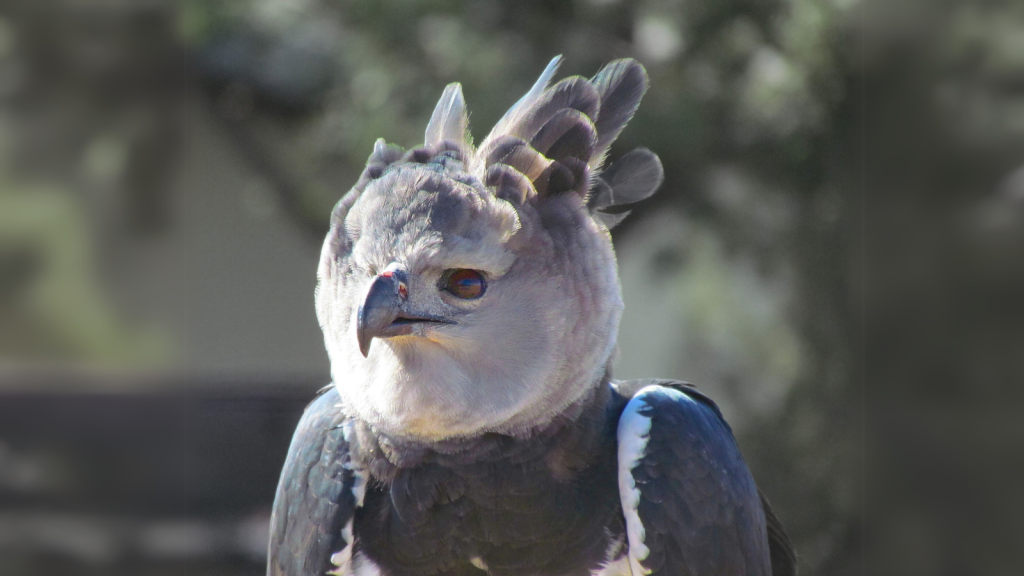
Harpy Eagles display an impressive ability to remember the locations of their prey’s favourite haunts. They’ve been observed returning to specific trees or areas where they’ve successfully hunted before, sometimes after several months. This spatial memory helps them efficiently patrol their large territories and find food in the dense rainforest.
10 Desert Predators With Unique Hunting Adaptations

The harsh desert environment has shaped some of the most remarkable hunters on Earth. These animals have evolved incredible ways to survive and thrive in a world of extreme heat and scarcity. From silent stalkers to venomous ambush experts, desert predators are masters of adaptation. Their hunting techniques are as varied as they are fascinating, each perfectly suited to the challenges of their arid homes. Join us as we explore ten of these amazing creatures and the special tricks they use to catch their prey.
Read More: 10 Desert Predators With Unique Hunting Adaptations
15 Terrifying Prehistoric Creatures That Aren’t Dinosaurs

When we think of prehistoric beasts, dinosaurs often come to mind first. But the ancient world was filled with many other terrifying creatures that would give even the fiercest dinosaurs a run for their money. Let’s dive into the murky waters and dense forests of prehistory to meet some of these nightmarish animals that once roamed our planet.
Read More: 15 Terrifying Prehistoric Creatures That Aren’t Dinosaurs
Modern Sea Monsters | 15 Massive Marine Mammals Still Roaming Our Oceans

The oceans of our planet are home to some of the most awe-inspiring creatures on Earth. These marine mammals, with their enormous size and incredible adaptations, seem alien or prehistoric. But an actual up-close interaction with one of these incredible creatures is life-changing. Their lives and sheer size might be unfathomable, but their intelligence and magnificence is clear for all to see. From the largest animal to ever exist to deep-diving behemoths with teeth as big as your arm, these creatures are awe-inspiring and remind us why we need to do more to save our oceans before it’s too late.

